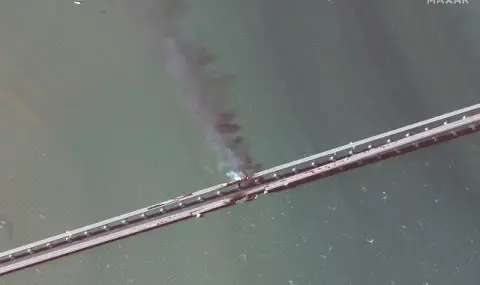Russian forces carried out a large-scale series of drone and missile strikes against Ukraine on the night of January 31 to February 1. The Ukrainian Air Force reported that the Russians launched seven Iskander-M/KN-23 ballistic missiles from Voronezh region and Crimea; seven Iskander-K cruise missiles from Crimea and Donetsk region; eight Kh-22 cruise missiles from Tu-22M3 aircraft; eight Kh-101/55 cruise missiles from Tu-95MS strategic bombers; 10 Kh-59/69 cruise missiles from tactical aircraft over Voronezh region; two Kh-31P anti-radiation missiles from the Black Sea; and 123 Shahed drones from Bryansk, Kursk and Oryol regions; Millerovo, Rostov region; Primorsko-Akhtarsk, Krasnodar region, and Cape Chauda, Crimea.
This is according to the latest analysis of the fighting in Ukraine by the Institute for the Study of War (ISW).
The Ukrainian Air Force claims to have shot down 56 Shahed drones; 61 drones were "lost", possibly due to Ukrainian electronic warfare interference; and prevented an unspecified but significant number of Russian missiles from reaching their targets. Russian ballistic missiles have had a higher success rate.
ISW continues to assess that Russian forces are likely using ballistic missiles in strike packages, as Ukraine has few air defense systems suitable for interception.
Ukrainian officials, including President Volodymyr Zelensky, reported that Russian missiles had hit an apartment building in the city of Poltava; the historic center of Odessa and a UNESCO-protected building, residential areas, warehouses and private property in Kharkiv and Kyiv regions.
The Norwegian Ministry of Foreign Affairs confirmed that Russian forces had struck an area near where Norwegian diplomats were staying.
The Russian Ministry of Defense (MOD) claimed that the strikes overnight were aimed at Ukrainian gas and energy facilities that support the defense industrial base.
A recent attack by a Russian drone on a Ukrainian naval drone suggests that Russian forces have developed a new method against the Ukrainian presence in the Black Sea. The Russian Defense Ministry announced on February 1 that Russia's Black Sea Fleet (BSF) had used a drone against a Ukrainian one in the Black Sea.
Russian bloggers claim that the BSF launched a Kronshtadt Orion drone capable of carrying missiles from an unspecified naval vessel, and this strike may be the first documented case.
Another Russian blogger called on the Russian authorities to increase production of the X-UAV (TKB-1030) to effectively combat Ukrainian forces' naval drones, as it is now too risky for Russia to operate helicopters near the Black Sea.
